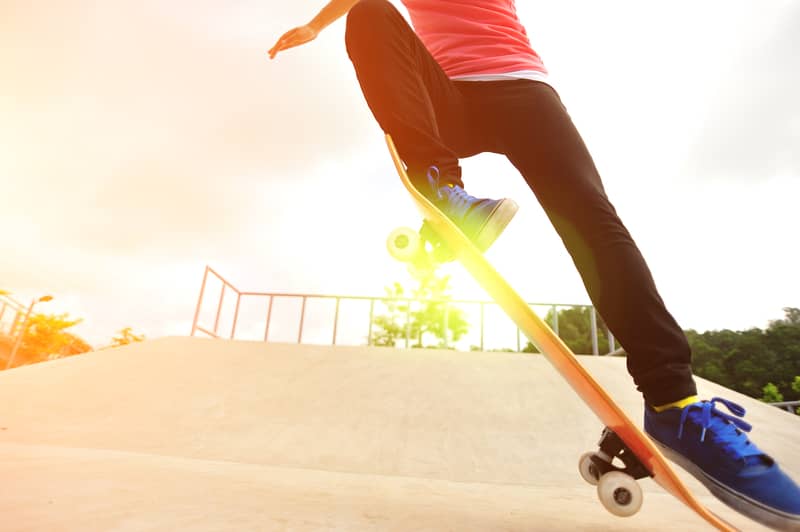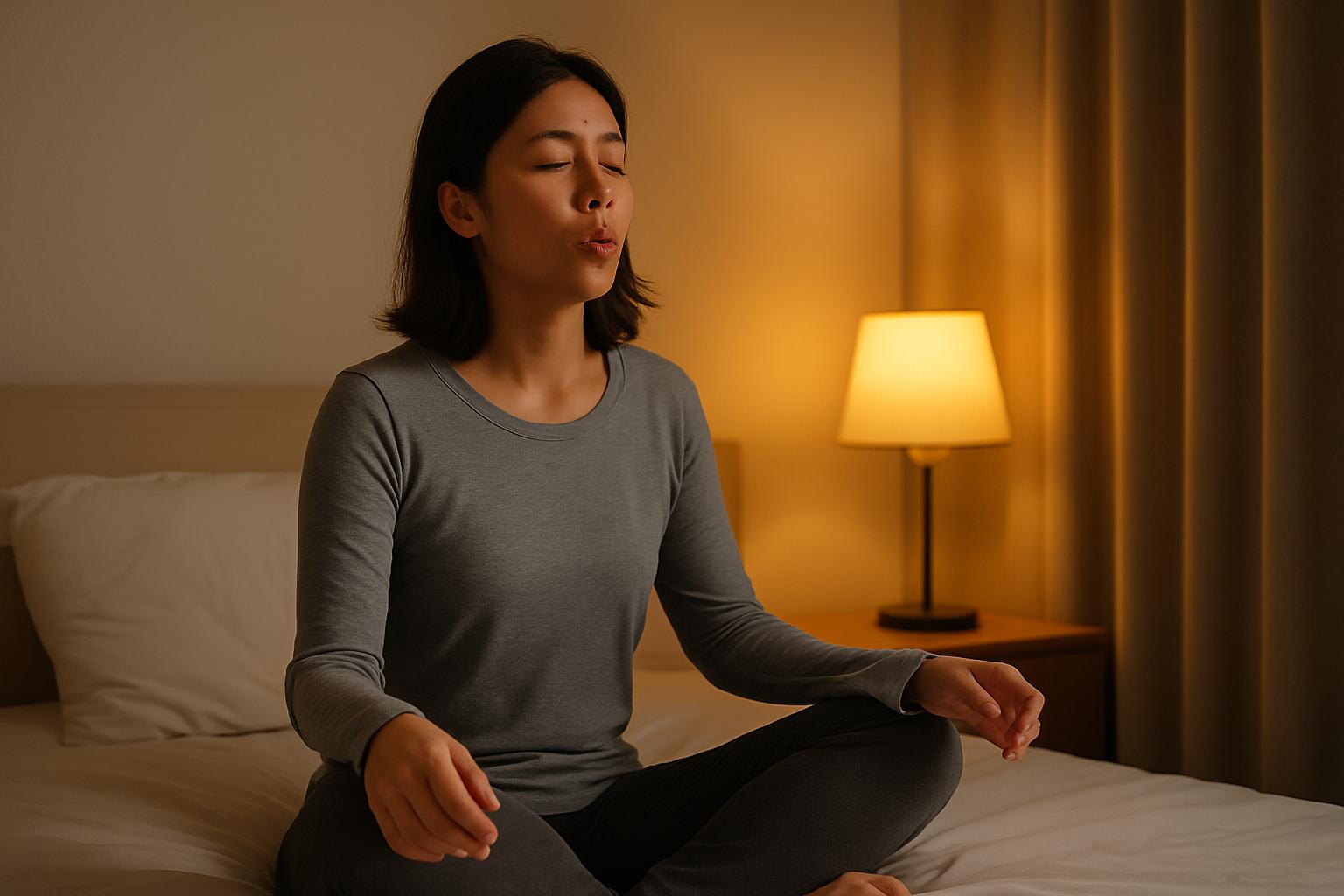Have you ever heard of a condition called peroneal tendonitis? Well, peroneal tendonitis is no other than an irritation of the tendons on the dorsal region of the foot that affects the fibrous bands that serve to retain the tendons as well. This irritation is usually caused by specific inappropriate movements that can cause tears and inflammation in those tissues. One of the options for the treatment of this condition is acupuncture for peroneal tendonitis, which helps to promote blood circulation in the area and reduce inflammation at the same time.
The occurrence of peroneal tendonitis is fairly rare, though it’s a common sports injury. Due to the nature of some sports that require repetitive and precise movements over a short period of time, it may happen that the tendons and related tissues get overworked, causing inflammation.
According to this article on Mercy Health, the main symptoms of peroneal tendonitis are:
- Pain and swelling in the ankle
- Tenderness behind the ankle bone
- Pain right on wake-up time
Factors that contribute to the occurrence of peroneal tendonitis are many. Just to name a few, things like inappropriate footwear while doing sports, tight calf muscles, inappropriate training, muscle imbalances, poor foot biomechanics, etc., all increase the probability of suffering from peroneal tendonitis.
Can Acupuncture Help With Peroneal Tendonitis?
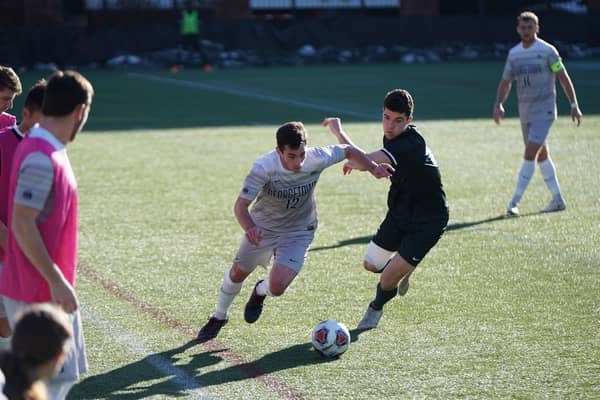
Suppose you’re still wondering whether acupuncture can help to heal the tendons. In that case, there are now a number of studies that show TCM therapeutic approaches, including electroacupuncture, Tuina manual therapy, and dry needling, are some of the best options. They have proven to be efficient therapies when other Western therapies fail. In some cases, physical therapy might be helpful.
In a short study carried out in humans by the certified acupuncturist and Ph.D. student, YU Hong-li, both acupuncture for tendonitis in the ankle and heel tendonitis treatment with acupuncture was shown to significantly improve its symptoms as well as reduce pain intensity, enhancing the quality of life for patients.
There are also some clinical studies showing the efficacy of acupuncture for calcific tendonitis. In this pilot study published by Elsevier B.V., the calcific deposits were reabsorbed, and the range of motion returned to normal in the ten patients to whom it was done.
Orthopedic Acupuncture For Peroneal Tendonitis
The physiopathology observed of peroneal tendonitis, according to traumatology in Chinese medicine, is the stagnation of Blood and Qi. Due to the nature of this health condition, proper treatment with acupuncture for peroneal tendonitis requires a scrutinized diagnosis, preferably with the help of an X-ray machine or similar that shows with certainty the level of the injury.
The use of acupuncture for peroneal tendonitis, according to Chinese medicine, is done systematically, rather than just inserting the needles in some painful spots as practiced in physical therapy. The acupoints used in peroneal tendonitis acupuncture are specific points whose functions help to accelerate healing, absorb and metabolize the edema, reduce pain intensity, restore the damage in the peroneal tendons and improve their general condition.
Peroneal tendonitis can be subdivided into acute, subacute, or chronic, depending on the level of evolution of the injury. The best time for the treatment of tendonitis, in general, is at its onset, when you start to notice the symptoms. However, the treatment with acupuncture is shown to be effective in all stages of tendonitis. A study by Researchers from the Nanning Hospital of TCM shows the efficacy of herb therapy and acupuncture for posterior tibial tendonitis, sports injuries, and ankle pain, among other ankle conditions.
For instance, rotator cuff tendonitis acupuncture treatment is included in this study.
Acupoints For Peroneal Tendonitis
As you’ll see, acupuncture points are connected to a channel that runs on specific routes within the body in a manner that resembles the flow of water from its springing up to when the river merges with the big ocean. This is when the channel that begins in the superficial layers of the body enters the vital inner organs.
When we stimulate an acupuncture point, we’re influencing the entire channel in ways that Chinese doctors have tracked down since old times. That’s why the same points that are used to treat peroneal tendonitis may be the same acupoints used in acupuncture for elbow tendonitis, for example. This is a common thing in the Chinese Jingluo system.
The selection of acupoints for the self-treatment with acupressure are the same acupoints used in acupuncture for peroneal tendonitis.
Acupoint: Bl-59 (Other Names: Urinary Bladder-59/Fu Yang/Tarsus Yang)
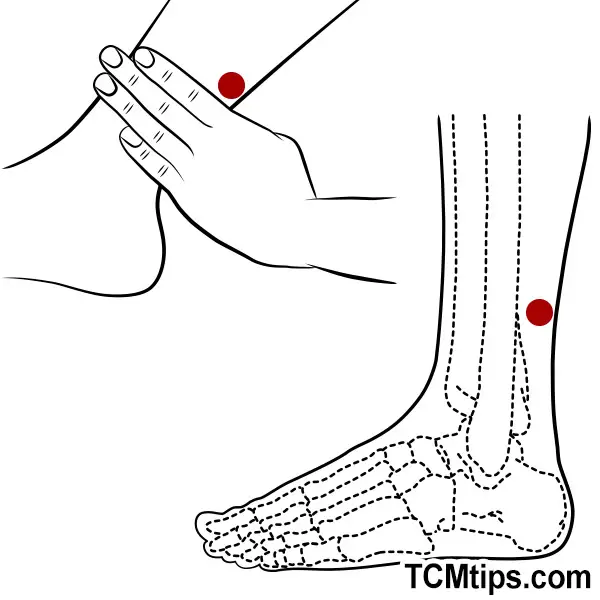
Bl-59 is located 3 inches above the outer ankle, between the tendons and bones, where the Yang Qi of the Foot Shaoyang Gallbladder Meridian and Foot Yangming Stomach Meridian drives the Qi and Blood of the Foot Sun Meridian upward.
Massage on this point stimulates the flow of qi and blood to promote the circulation of qi and blood, adjust yin and yang, and help to dispel evil. This is a helpful acupoint for treating headache, lumbosacral pain, lower limb impotence, swelling, and pain in the outer ankle.
Acupoint: GB-40 (Other Names: Gallbladder-40/Qiu Xu/Mound of Ruins)

GB-40 is the Yuan-Source point of the Shaoyang Gallbladder Meridian. It can treat pain in the front and outside of the ankle joint after a sprain. It’s located at the ankle joint, in the depression anterior and inferior to the lateral malleolus. To stimulate this acupoint, apply firm pressure using your thumbs.
Due to its location, this acupoint is very strategic in the treatment of peroneal tendonitis. It is also used in acupuncture for tendonitis in the knee. It activates the channel and helps to drain the excess dampness and heat in the inflamed area.
This is also one of the acupressure points for sciatica.
Acupoint: KI-3 (Other Names: Kidney-3/Tai Xi/Supreme Stream)
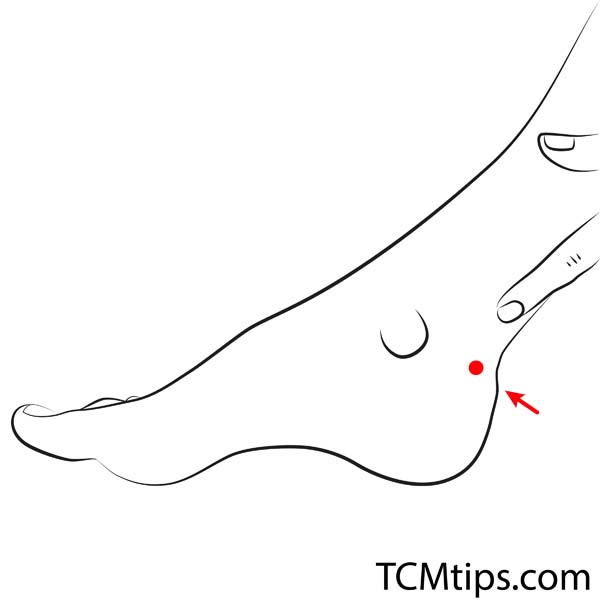
You can find KI-3 on the inner side of the ankle, on the level of the prominence of the malleolus bone.
KI-3 is a very important acupoint among all acupuncture points. It’s the Yuan point of the foot Shaoyin Meridian and is the Earth point of the meridian. It is a useful acupoint for relieving ankle sprains, and it is used in acupuncture for Achilles tendonitis due to its location. But besides this, it has many effects on the Kidney health and on the lumbar spine.
Place your thumb on the acupoint and apply a firm pressure until you feel a slightly painful sensation.
KID-3 is also featured in our article about acupressure for inflammation.
Acupoint: Bl-58 (Other Names: Urinary Bladder-58/Fei Yang/Taking Flight)
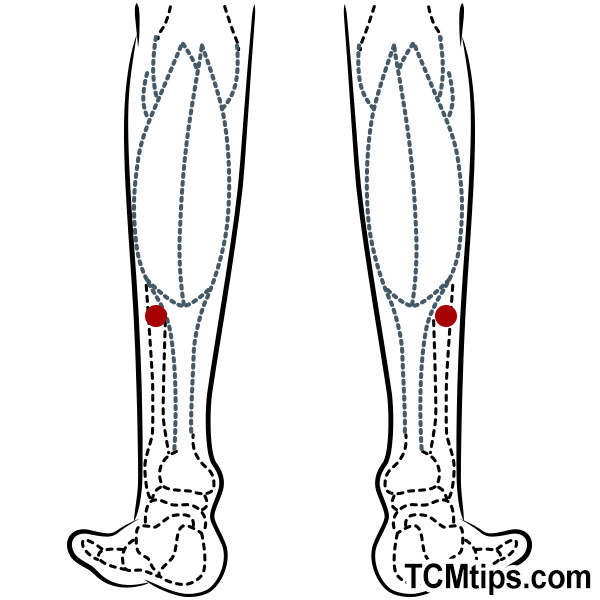
Bl-58 is the Luo point of the foot Taiyang Meridian. It’s located on the lower leg, a little below the midline, on the exterior side.
The stimulation of the acupoint helps to calm the pain that irradiates on the legs, and since it is the Luo point of the Urinary Bladder Meridian, it connects with the foot Shaoyin Kidney channel on the KID-3 point, creating a synergy of benefits.
You can apply a deep pressure while doing circular movements on this acupressure point for as long as you can.
Acupoint: GB-34 (Other Names: Gallbladder-34/Yang Ling Quan/Yang Mound Spring)

GB-34 is the He point of the foot Shaoyang Gallbladder Meridian. This acupoint is also the Hui point of the sinews. What this means is that it’s the point of excellence to treat sinews issues. It is located below the external side of the knee, in the tender depression.
Sit in a comfortable position with your legs slightly bent. Press the acupoint for ten seconds while breathing deeply. Release for a few seconds before pressing again.
GB-34 is also one of our selected acupoints of acupressure for back inflammation.
For more on tendonitis, see acupuncture for tendonitis in hand and acupuncture for tendonitis.

Try our Anti-Aging Gua Sha Tool designed to bring out your skin’s natural glow.
Best Gua Sha Product- Anti-Aging: The tool is designed to target 11 specific aging signs such as wrinkles and sagging skin. By following the 7-step routine, users can improve skin firmness and reduce fine lines naturally.
- Enhances Skincare Routine: It works effectively with serums and lotions, boosting absorption and efficacy of skincare products.
- Visible Skin Improvement: Users can expect a smoother complexion, reduced puffiness, and a more youthful appearance.
 P. Sze
P. Sze 